As you may know from reading my What is Kill the Past article or simply through osmosis and personal research, most games Suda worked on during his career before Killer7 (even dating back to his time in Human Manufacture) were part of a single storyline tentatively called the “Kill the Past” series.
(A common misconception being that it is an officially sanctioned name; in fact, the “Kill the Past” monicker originated on the original version of this website, based on the recurring theme of overcoming past trauma conceptualized in the phrase “Kill the Past” which is featured, in some way or another, in most of his titles.)
Even the most recent GHM games have recently been tied back to the same timeline through Travis Strikes Again, mostly with the No More Heroes series, but even smaller games such as the kinect exclusive Diabolical Pitch.
Killer7, however, despite some cross cameos with some of these games (namely Moonlight Syndrome, Flower Sun and Rain and Travis Strikes Again) is actually set in a different timeline / parallel universe by Suda’s own admission in the Hand in Killer7 interview (Archive link).
– Is there a connection between Killer7 and your previous games?
There are cameo appearances. However, there are copyright issues involved, so I created them so that if you asked me if there were a direct connection between the games, I’d say “no.” In my head, I’m creating them in one big world, but the individual settings of the stories are completely different, so it’s not like these stories can be told in the same timeline.
There is, however, ample evidence leading me to believe that in early stages of development, Killer7 was indeed meant to be a follow-up to Flower, Sun and Rain.
Why does Killer7 take place in an alternate universe?
The in-universe timeline simply does not match that of the other games, which are mostly self-contained within their own smaller settings. The world of Killer7 has undergone a revolution around the year of 1998, which led to every nuclear weapon in the world being decommissioned, and the internet and international flights being outlawed in order to decisively eradicate terrorism as a concept.
In the following years, the world developed differently than our own, in that intercontinental highways replaced international flights as the principal connections between countries, and while the internet transformed into a hidden underground world only populated by hackers & illegal online gamers, magazines and television are still the most relevant means of mass communication.
This is the setting that is in place at the start of the game, which takes place between 2010 and 2014. That is to say that between 1998 and 2014, flying on planes and browsing the internet have been completely outlawed in the world of Killer7, which developed accordingly.
Meanwhile, past KTP games (The Syndrome games, The Silver Case, Flower, Sun and Rain) took place respectively in 1997, 1999 and 2001. Both Silver Case and FSR feature intercontinental flights, and the development of the internet is a thematic undercurrent in the entire series. Even subsequent games (namely the 25th ward, no more heroes and TSA) all feature intercontinental flights and the internet as it functions in our own world.
The events of the game Killer7 itself involve the destruction of major japanese cities, a fact that does not impact any other game in the timeline. In fact, in Travis Strikes Again, the protagonist flies a plane all the way to Tokyo which shows no sign of a major bombing.
Plus, the entire argument is moot when the writer himself admits in the quote provided above that the game itself takes place in an alternate timeline.
As per why that is, as mentioned by Suda himself, I’d imagine copyright issues were probably at the core of it. Killer7 is owned by Capcom who financed the entire production, and to a lesser extent there was probably a vested interest in making the game accessible to an audience which could not have been familiar with past continuity. In other words, Killer7 was the first game by director Goichi Suda to be released in english.
Despite being set in a different continuity however, I feel there is enough tematic overlap for Killer7 to be considered part of the same series as pervious and subsequent games.
Thematic & structural overlap and why I consider Killer7 to be part of the same series
Killer7 borrows its chapter structure directly from The Silver Case.
The prologue is an introduction to the main cast of characters, and is unrelated to the main plot.
The first mission is the main plot. (The Japanese/American conflict in Killer7, the awakening of Kamui in TSC.)
The second mission is an unrelated case. (The Andrey Ulmeyda assassination in Killer7, the suicide case in TSC.)
The third mission focuses on one character, and explains their backstory. (Dan Smith in Killer7, Sumio Kodai in TSC.)
The fourth mission is about propaganda, and how information is spread. (The Handsome Men comicbook & online game in K7, and Kamuinet in TSC.)
The fifth mission is when everything goes to shit, most of the main cast is killed off and the truth is revealed about a decades old incident.
The sixth mission is an epilogue where the consequences of the final chapter are explored.
Killer7 actually had an equivalent to the Placebo reports planned during development, but it was ultimately scrapped. It is however included in the official handbook as the Jaco Reports. Not only that, but the way the overall plot is structured is similar to that of most other KTP-themed games.
The protagonist of the game is indeed a man who is in conflict with his own past, in that a traumatic event related to a conspiracy has traumatized him to the point of being erased from his memory entirely.
The Killer7 incident would act as the decades old incident that is covered up before the beginning of the game. (In TSC, it’s the nominal Silver Case. In FSR, it’s the genocide of the Sundance tribe. In NMH, it would be the murder of Travis’ parents.)
Said incident, is actually responsible for shaping the personality of the protagonist and is related to the past he himself has forgotten. In Killer7, Emir Parkreiner is revealed as being the perpetrator of the Killer7 murders. The Silver Case incident is what kickstarted the Kamui Maspro, which shaped the protagonist’s identity. The Sundance genocide was perpetrated in order to steal their technology which is the core of the Euro Maspro, of which Sumio Mondo was a pawn of and originally escaped from. In No More Heroes, the murder of Travis’ parents actually turns out to be the thing that made him retreat into a world of fantasy entertainment, and his main motivation for climbing the ranks.
Near the end of the game, the authority figures surrounding Garcian Smith (Samantha Sitbon, Christopher Mills, possibly Harman Smith) are murdered or otherwise excised from his life. Which allows him to break through the veil of propaganda in order to seek out the truth, and reclaim his lost past. Similar things happen in other KTP games as well; The entire HC unit gets killed or jailed by the end of The Silver Case, which is partially what leads the protagonist into finding out the truth about the Kamui Maspro & The Silver Case. In Flower, Sun and Rain Edo Macallister disappears near the end leaving Sumio to fend for himself. In No More Heroes, Sylvia Christel also disappears right before the climax, which ends up with the UAA being revealed as a scam. That is before the game’s narrative is revealed as being just that, a bullshit videogame narrative where everything and everyone is related to one another.
(As a personal note, this is not me calling Killer7 a rehash. I’m just pointing out similar plot points, but I actually think it’s impressive how different all these games look, play, sound and feel to one another.)
In what way would the game have connected to past games?
The following is mostly speculation on my part. But as stated earlier I believe that Killer7, was originally meant to be a follow up on certain plot points presented in Flower, Sun and Rain. Starting with the character of Step Sding.
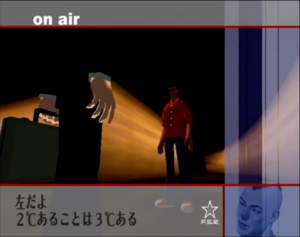
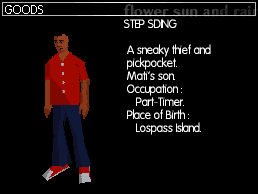
For once, his resemblance to the child Emir we see in the Smile chapter of Killer7 is obvious.
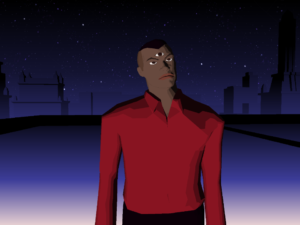
But that is not the only connection between these two characters.
In Flower, Sun and Rain it is revealed that the Sundance tribe had been genocided by the ELBOW group (a globalist consortium of advanced nations), in retaliation to the Silver Case murders, but most importantly to make use of their ancient technology. Said technology would be, the silver eyes.
Silver eyes are said to be harvested from a specific breed of hyenas, and they are also said to grant immortality to their users.
(The reality is probably a lot less magical than that. By the time of the 25th Ward, Silver Eyes are treated as massive data repositories while their immortality powers are considered a superstitious belief. It is also my belief that the hyena story could also be a myth, but that’s neither here nor there for now.)
The Sundance people also happened to have a very particular biology, and they all share the same personality.
The Euro Maspro was kickstarted in order to replicate the Sundance’s technology and biology. It involved breeding the Lospass hyenas for silver eyes, and using a batch of smuggled children (Shelter Children) as models to create various batches of stock bodies.
Eleven of these children would eventually run away from the Shelter. One of those eleven children, who were not native of the island, was Step Sding.
At the end of the game ELBOW, having achieved its goal, disbands.
The original Step Sding is living in France. By the end of FSR, Sumio Mondo’s mission is to pass on his memories (that is to say. The final remnants of the Sundance tribe’s history & way of life.) to Step Sding, the final seed.
I have reasons to believe that Emir Parkreiner was originally meant to be Step Sding, which are not limited to their physical resemblance.
In the Hand in Killer7 handbook, the original Killer7 murders (As in, the killing of the Smith Syndicate) are said to have happened in France, at the hands of Emir Parkreiner.
——————————————————————————-
S: REPORT #19 [APPEN-JAC-S]
——————————————————————————-
The so-called “Smith Syndicate Incident” is filed with the number A-00001 in
the Killer7-related data.
Whether by chance or by fate, the men and women who shared the last name
“Smith” were gathered in a cheap hotel, in the south of France, and they were
all murdered. It’s obvious who killed them: Emir Parkreiner, also known as
“the Bloody Heartland.” He was a peerless murderer, who slew 300 people in the
U.S. and Europe. Even though these murders happened fifteen years ago, Park-
reiner still has not been apprehended.
(The dates clearly do not match up, but my purpose is not to connect the two games directly. I already explained how that is impossible. What I am trying to point out, is how in the original build of the game, there likely was a connection.)
So both Step and Emir, were stationed in France and looked quite similar.
When Garcian/Emir finally reaches the Union Hotel, he is greeted by Edo Macallister from FSR.
While in the finished game this rapresents a fan-servicing cameo and not much else. When taking into account the FSR connection, it would make perfect sense for Step to be aware of Edo. As he would be in possession of Sumio Mondo’s memories.
Edo Macallister, along with the rest of the Hotel’s staff, is eagerly awaiting Step’s return by the end of FSR. As per why that would make any sort of sense, I will link to the My thoughts on the “Time Loop” page.
Moreover, in the Japanese version of Killer7, Emir Parkreiner’s social security code is ELBOW. (Which was changed to EAGLE in the international version.)
Implying that ELBOW had something to do with creating his identity. Which would make perfect sense, considering that Step Sding was part of ELBOW’s Euro Maspro.
Emir’s awakening as the bloody heartland, also bears some distinct similarities with the awakening of Kamui within ethnic Sundances, and byproducts of the Kamui & Euro Maspro.
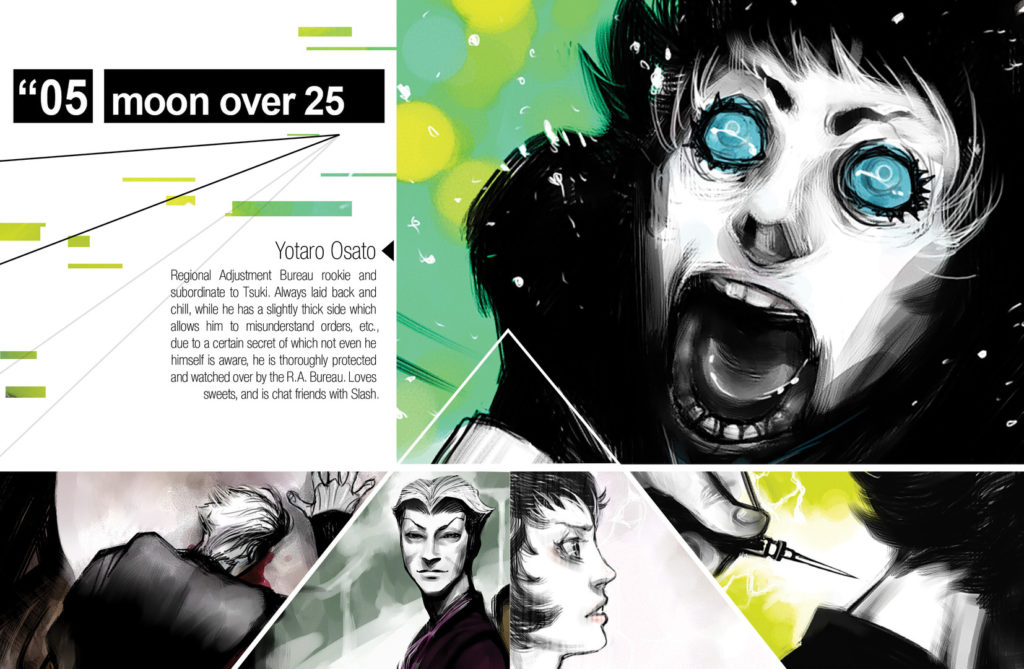
The mentions in the HiK7 handbook timeline of an Emir Parkreiner somehow doing crimes in the 50s. I believe to be similar in nature to the idea of Kamui Uehara. A legendary killer after whose personality the new generation of children was based on.
[ 1955 ]
The Union 7 attended a secret meeting at the Union Hotel, which was called
“the Yakumo Secret Meeting.” They were killed by a serial murderer, though
the whole incident was hushed up. The affair was called “Killer7.”
On the rooftop of the Union Hotel, Harman Smith met a dying boy with three
eyes. The boy was Emir Parkreiner.
Harman Deltahead and Kun Lan resurrected.
By that logic, the Emir Parkreiner we play as in the Killer7 game, could be nothing more than a mental clone of the original Emir Parkreiner.
One of the objectives of the Maspro project in the Silver Case & FSR games, is to generate mental clones of Format Kamui / Kamui Uehara. Which would include Step Sding, as a victim of the Euro Maspro project.
Through the course of FSR, a stock body of Step Sding (not the original Step), blows himself up as a human bomb.
Introducing the idea that stock bodies could be used for human bombing terrorist attacks.
Now take a look at this beta trailer for Killer7.
(It should be noted that Killer7 originally began development in 2002, merely a year after the release of FSR.)
This trailer shows the heaven smile as perfectly normal looking human beings, that seem to be controlled remotely. Wouldn’t that be a perfect usage, for Euro Maspro stock bodies?
Once again, most of this is speculation on my part. For something less theoretical, Sundance Shot (arguably the main antagonist of FSR. Though that game did not really have an antagonist.) was supposed to play a role in Killer7.
As per Suda’s words:
– There were once also plans for the infamous Sundance (the character from The Silver Case and Flower, Sun, and Rain) to make an appearance, I hear.
The intention was for Sundance to be appearing continuously throughout the game. Harman would repeatedly go back to the past, and the trigger for that would be Sundance. He would show up here and there throughout the stages, and he would guide Harman to the past. He also played another vital supporting role. I wouldn’t get into, however, whether he’s the same Sundance from my previous games.
The reason why he wouldn’t comment on wether or not he was the same exact Sundance. Is because Sundance’s nature in FSR is extremely vague to begin with, I believe. He doesen’t even seem to have a physical body at all.
In a Reddit AMA (Archive link), Suda has mentioned that Marionette Mother, a mysterious character which only appeared in the original TSC Playing Manual, was meant to make her debut in the original build of Killer7. It should be noted that his claim of her appearing in one of the early trailers is, to my knowledge, erroneous, and that her model doesen’t seem to be present in the leaked beta build.
Interestingly enough, the marks on her forehead seem to allude to the concept of “Third Eye”, and they are reminiscent of the marks on Love Wilcox’s hand.
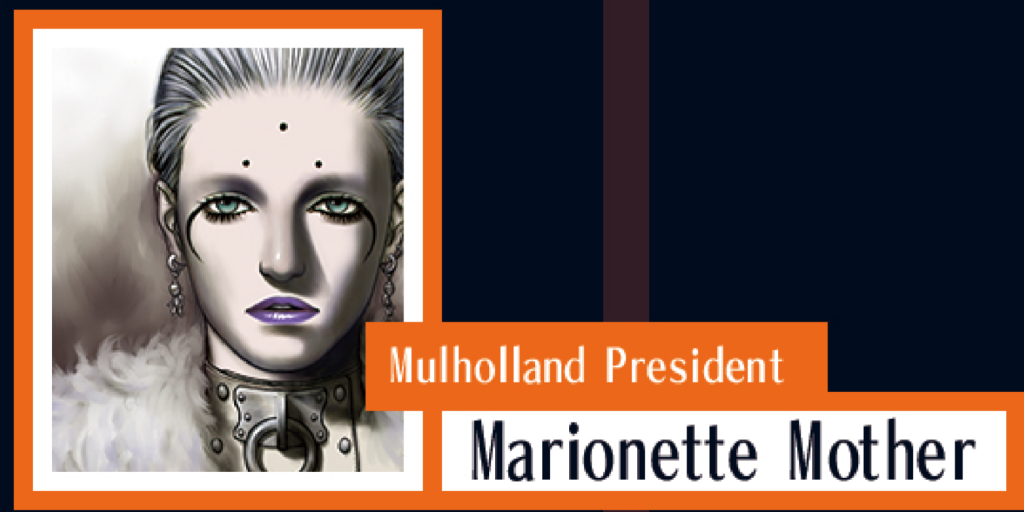
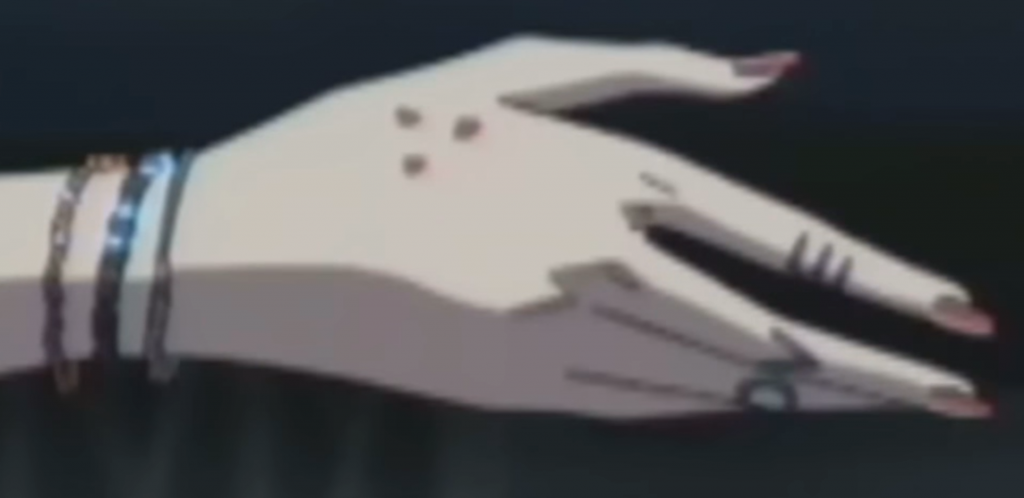
For a couple more references I believe to be less important:
Mithra, the god of contract from Moonlight Syndrome, actually makes an appearence in the Alter Ego chapter. Though I can’t seem to find any specific significance to it, other than that of a simple cameo.
Lastly, there is a model in the beta leak which I think closely resembles Sundance Mic. (A stock body found within the Euro Maspro factory in FSR.)
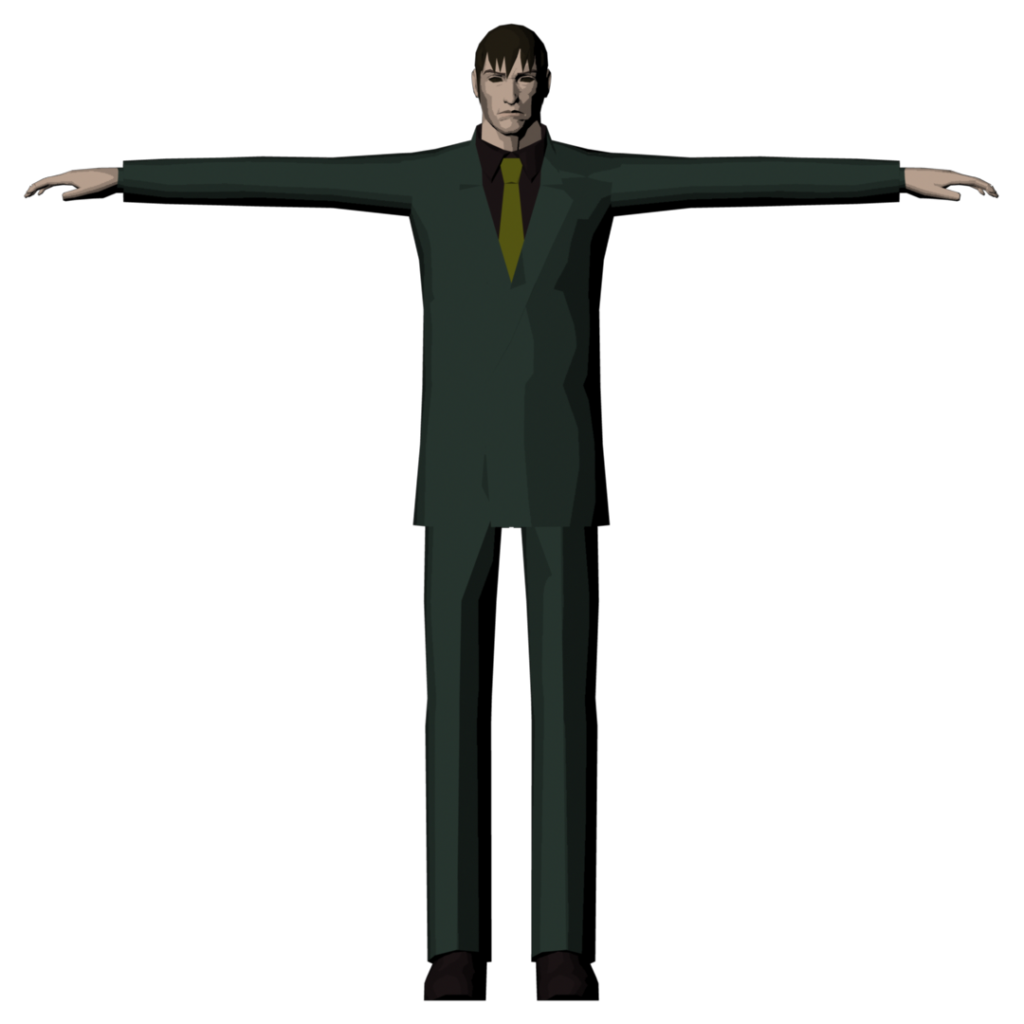
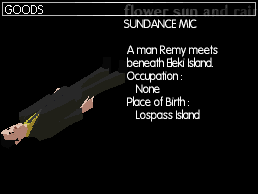
Though I will admit this connection is rather tenuous, it caught my eye and I find it worth mentioning.
Did some version of the events of Killer7 transpire within the KTP canon?
Most definetly yes.
At the end of No More Heroes, Travis is ambushed by a mysterious character who looks and sounds quite similar to Emir Parkreiner.
In an old interview (which I am currently unable to find. If anyone has it please link it to me.) Suda claimed that while the character looked like Emir Parkreiner, it was not him. But there was a special reason as per why he looked that way.
Could the mysterious assailant, be Step Sding? Unlikely, but interesting to ponder nonetheless.
(It’s worth pointing out that even when taken as a stand alone game, No More Heroes cannot possibly take place within the Killer7 timeline. Especially as it would predate the events of said game.)
UPDATE: I finally found the interview. You can read it here.
While I did remember correctly, in that Suda did imply there was a special reason for the bathroom assailant to closely resemble Emir. In the same interview he also confirmed that No More Heroes was (at the time) not connected to his past catalog of games.
This throws the Step Sding connection right out the window, while also confirming that the connections established by Travis Strikes Again in 2019 were indeed a retcon. (That is to say, that No More Heroes was originally developed as a stand-alone game, and later connected to the greater KTP mythos through TSA.)
With that in mind, the appearence of the Emir Parkreiner lookalike, was probably just meant to be a tongue-in-cheek parody, kept vague to avoid any copyright issues with Capcom.
More importantly, the intro video for Travis Strikes Again also stars Dan Smith and has references to Christopher Mills and Curtis Blackburn from Killer7.
Despite common belief, this does not indicate that Travis Strikes Again is a sneak sequel to Killer7. As it once again contradicts the worldbuilding of Killer7, and Christopher Mills is shown as being alive in 2017. While the death of Curtis Blackburn seems to have happened relatively recently.
This intro is actually a direct sequel to the Killer is Dead short story, which starred Dan Smith, Curtis Blackburn, Christopher Mills and Shigeki Birkin aka Badman (The other character in the intro.)
Even though the original Killer is Dead short story was meant to take place in the 70s, I am quite sure (though I may be mistaken) that no dates were ever mentioned within the text itself; making it easy for it to be retrofitted as a prequel for TSA.
Most recently, a Garcian Smith / Emir Parkreiner lookalike also had a cameo in the Red, Blue and Green comic (the original short story did not elaborate on the identity of the mysterious figure), and a character resembling Young Harman Smith appeared in a No More Heroes III screencap.
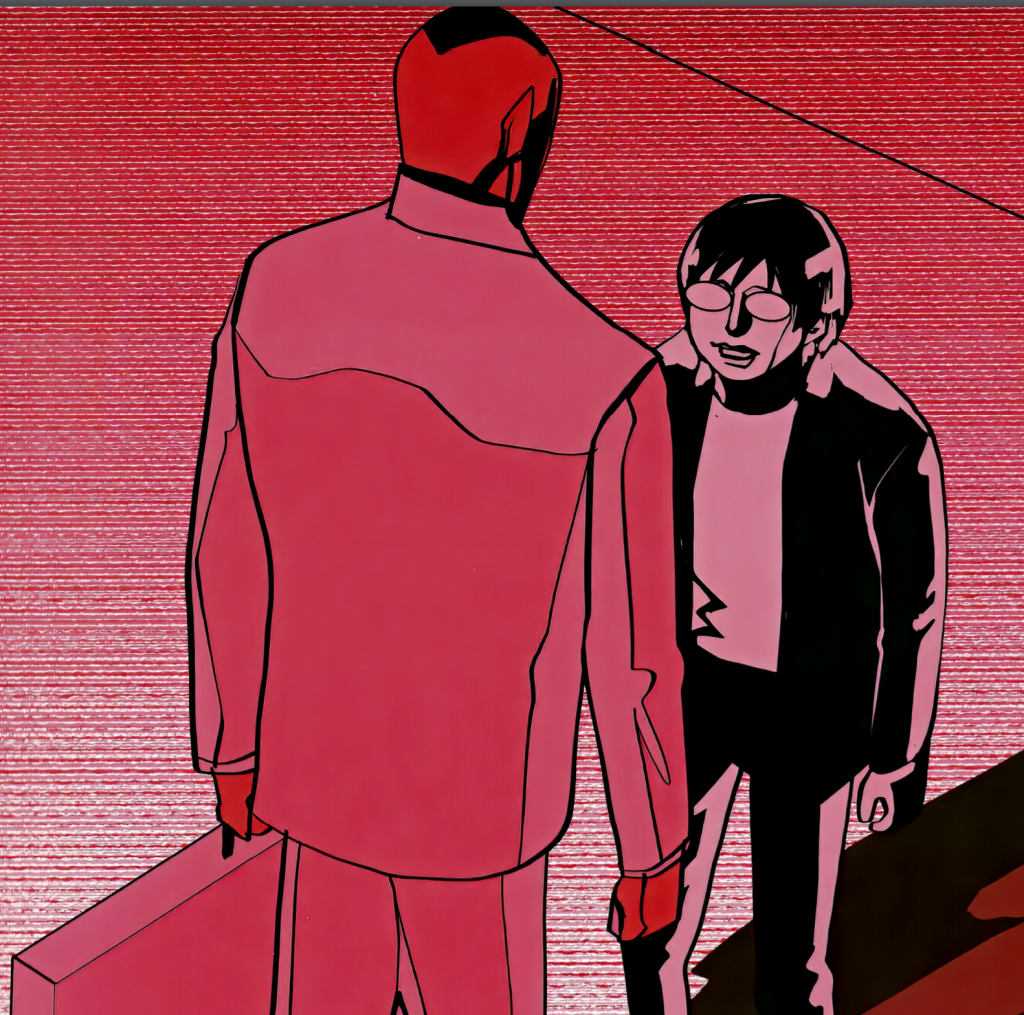
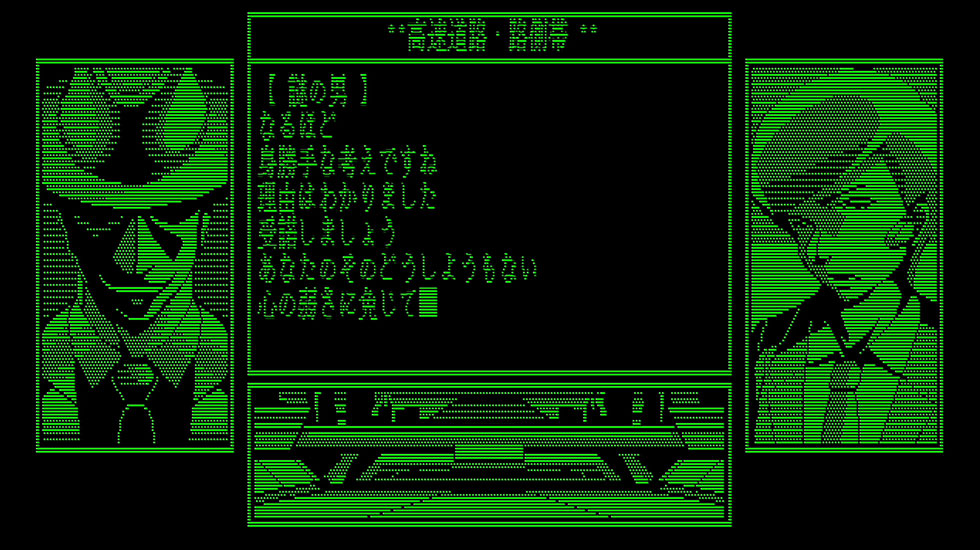
To me, this seems to indicate that while the events of the game itself are not compatible with the rest of the KTP timeline, the cast of Killer7, or at least a “reimagined” version of it, exists within it regardless. Check out THIS editorial for more of my thoughts on the matter.
